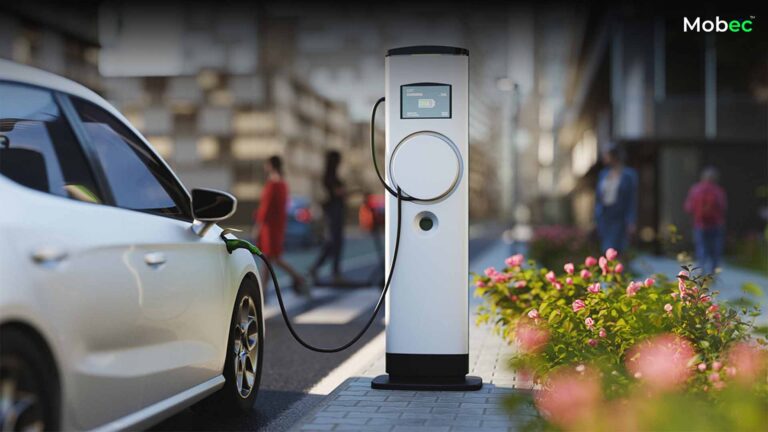As the world embraces a sustainable future, the rise of electric vehicles (EVs) has become an integral part of the global effort to reduce carbon emissions and combat climate change. With this surge in electric vehicle adoption, the importance of charging infrastructure has grown significantly. Developing efficient and accessible charging stations is crucial to ensure electric vehicles’ widespread acceptance and convenience. This blog aims to delve into how to maximize the benefits of charging stations for electric vehicle owners, exploring the current state of charging infrastructure, highlighting its significance, and providing insights on enhancing its accessibility and efficiency.
Understanding the Current State of Charging Infrastructure:

Charging infrastructure plays a pivotal role in influencing consumer behaviour and accelerating the adoption of electric vehicles. The current state of charging infrastructure varies across regions, with some areas boasting a comprehensive network of charging stations while others still struggle to establish a robust and accessible charging grid. Various types of charging stations, such as Level 1, Level 2, and DC fast charging, contribute to the diversity of the charging infrastructure landscape. Despite progress in recent years, challenges such as inconsistent charging standards, limited availability of fast charging stations, and the need for widespread public charging accessibility persist.
Maximizing Benefits for Electric Vehicle Owners:

- Developing a Comprehensive and Interconnected Charging Network:
Expanding a comprehensive and interconnected charging network is essential to maximise the benefits of charging stations. This network should cater to urban areas and extend to suburban and rural regions. Partnerships between government entities, private businesses, and electric vehicle manufacturers can play a pivotal role in ensuring the seamless development of an extensive charging infrastructure. Emphasizing the integration of renewable energy sources in charging stations can further contribute to a sustainable and eco-friendly charging ecosystem.
- Implementing Fast and Ultra-Fast Charging Solutions:
Investing in fast and ultra-fast charging solutions is crucial to cater to the growing demands of electric vehicle owners. The convenience and practicality of owning an electric vehicle can be significantly enhanced by integrating high-power charging stations in key locations such as highways, commercial hubs, and residential areas. Additionally, incorporating smart charging technologies and battery-swapping solutions can expedite the charging process and alleviate concerns about range anxiety.
- Ensuring Compatibility and Standardization:
To facilitate a seamless charging experience for electric vehicle owners, standardization of charging protocols and compatibility across different EV models is imperative. Implementing universal charging standards and adopting interoperable charging solutions can eliminate the complexities associated with charging infrastructure. This standardization can foster a competitive market for charging infrastructure providers, promoting innovation and efficiency in the sector.
- Enhancing User Experience and Convenience:
Creating user-friendly interfaces and intuitive mobile applications can enhance the overall charging experience for electric vehicle owners. Providing real-time updates on charging station availability, reservation options, and integrated payment solutions can streamline charging and encourage more individuals to transition to electric vehicles. Incorporating amenities such as Wi-Fi connectivity, rest areas, and shopping facilities near charging stations can further improve the overall user experience and incentivize the use of charging infrastructure.
- Promoting Public-Private Partnerships and Incentives:
Encouraging collaborations between public entities, private businesses, and charging infrastructure providers can accelerate the development of charging stations. Offering incentives such as tax credits, subsidies, and grants to stakeholders investing in charging infrastructure can foster a conducive environment for the growth of the electric vehicle market. Additionally, implementing regulatory frameworks that incentivize installing charging stations in commercial and residential properties can contribute to expanding the charging infrastructure network.
The Future of Charging Infrastructure:

The future of charging infrastructure holds promising prospects for the electric vehicle industry. Advancements in battery technology, integrating renewable energy sources, and implementing innovative charging solutions are expected to revolutionize the charging experience for electric vehicle owners. The emergence of wireless charging technologies, battery-swapping networks, and advanced smart grid systems will further redefine the dynamics of the electric vehicle ecosystem. As the world continues to prioritize sustainability and environmental consciousness, the evolution of charging infrastructure will remain pivotal in shaping the future of transportation.
Conclusion:
Maximizing the benefits of charging stations for electric vehicle owners is crucial in facilitating the widespread adoption of electric vehicles and promoting a sustainable future. By emphasizing the development of a comprehensive and interconnected charging network, implementing fast and ultra-fast charging solutions, ensuring compatibility and standardization, enhancing user experience and convenience, and promoting public-private partnerships and incentives, the charging infrastructure can evolve to meet the evolving needs of electric vehicle owners. With concerted efforts from key stakeholders and the integration of innovative technologies, the vision of a greener and more sustainable transportation ecosystem can be realized, paving the way for a future powered by clean energy and electric mobility.






















+ There are no comments
Add yours